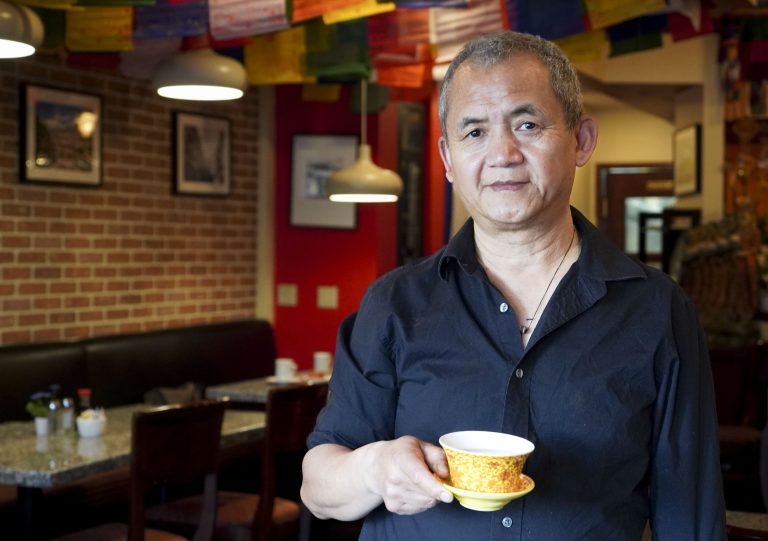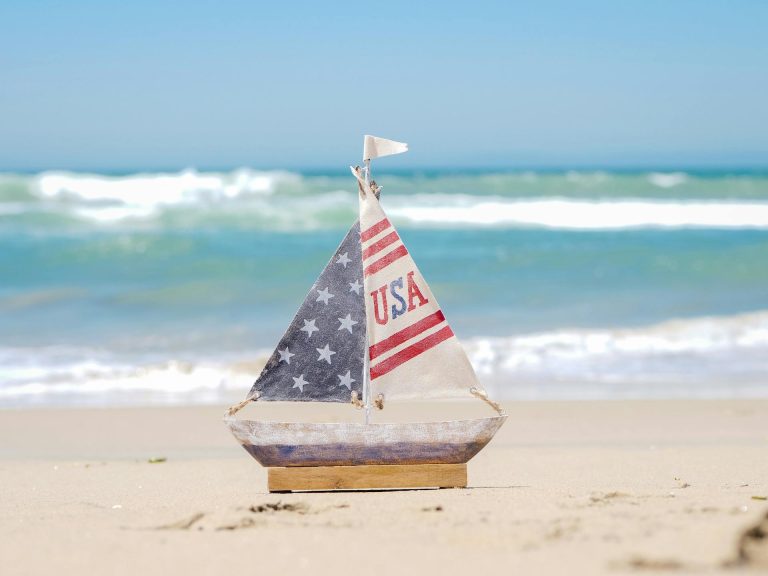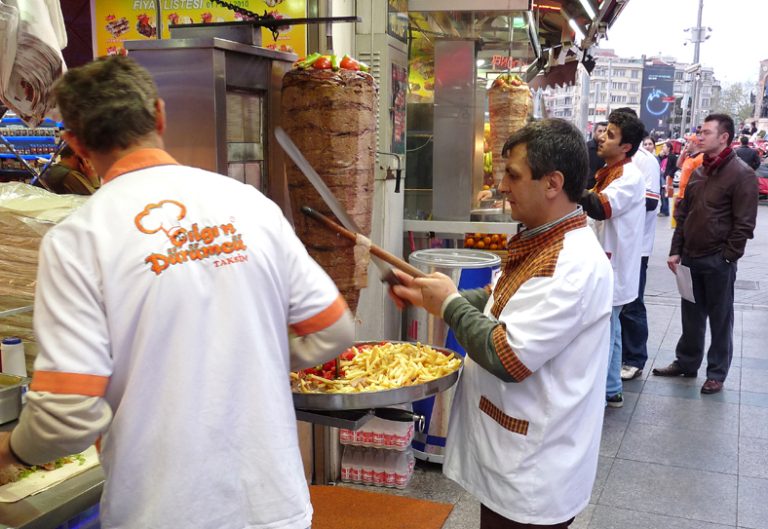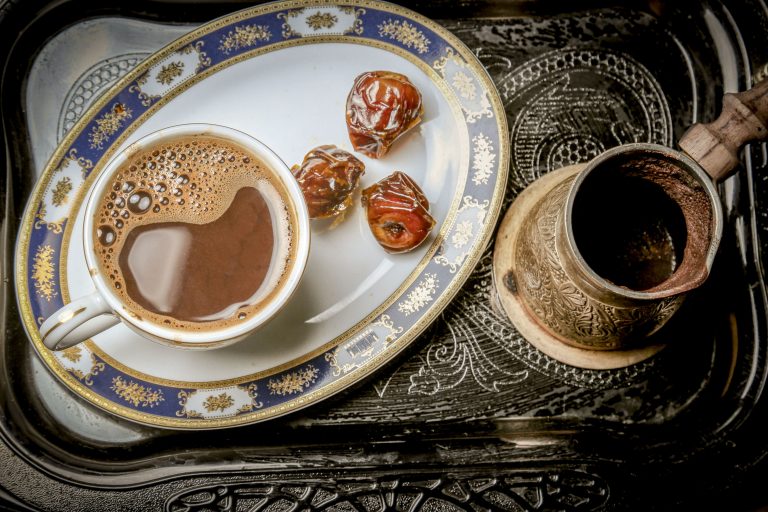Salty, slightly thick and rich, Tibetan butter tea is an acquired taste for Westerners; but for Tibetans, this beverage garnishes every occasion – from ordinary conversations to grand celebrations.
As the name suggests, butter is one of the main ingredients of this drink. But its function is not just for flavor. This fat provides Tibetans with the caloric energy needed to adapt to the extreme cold and lack of oxygen that characterize the Tibetan environment.
“It’s a secret in Tibet to keep the body warm,” said Tenzin Valunbisitsang, owner of Tibet Kitchen – the only Tibetan restaurant in Alberta, Canada. “Most Tibetans, the monks [in particular], they don’t drink alcohol. [Butter tea] is their secret to keep the body warm.”
What is Tibetan butter tea?
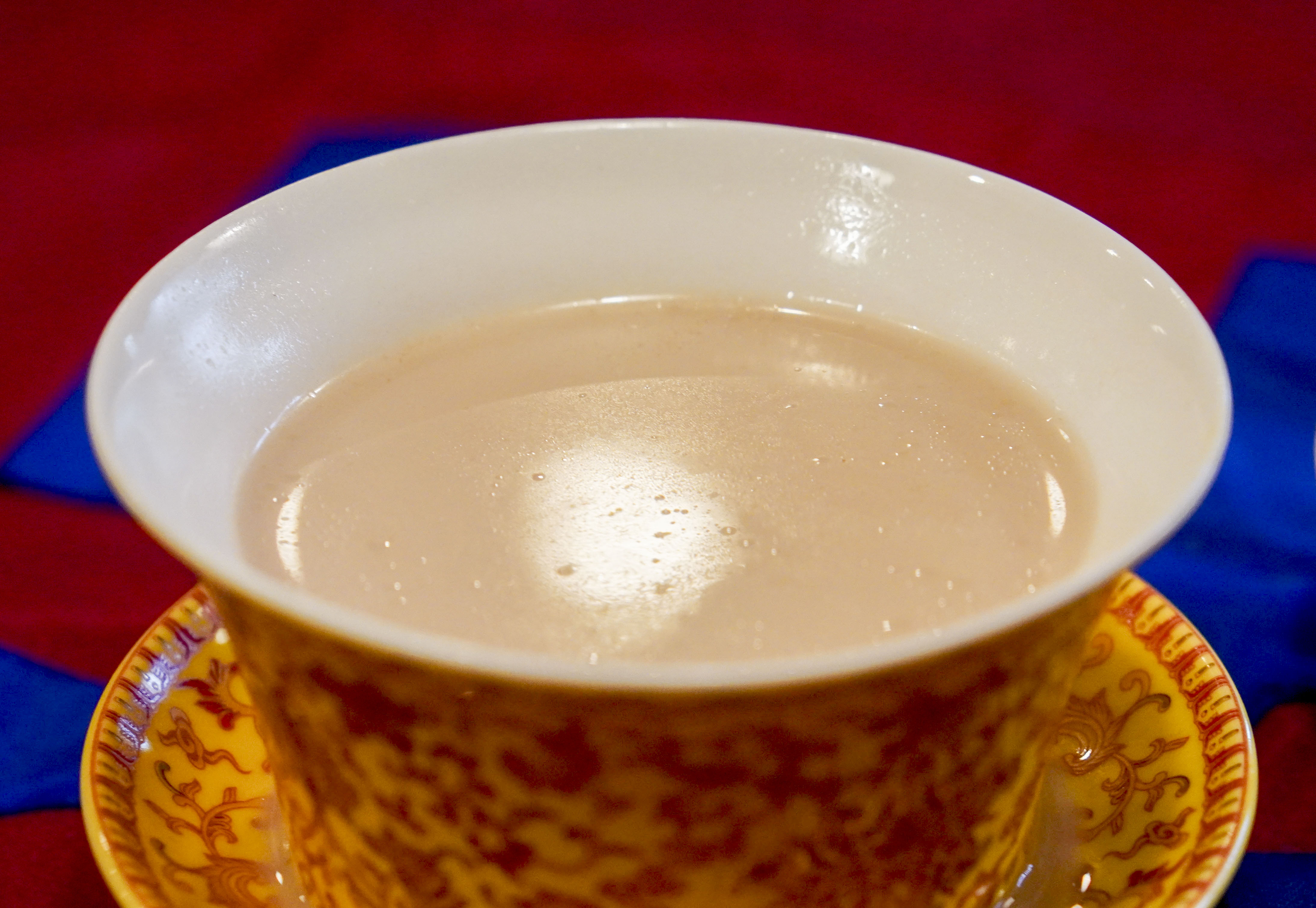
Authentic Tibetan butter tea is made with brick tea (a special type of tea produced in the Tibetan region of Pemagul), the milk and butter from yaks (the typical cattle of the Himalayan region), and salt.
Its preparation consists of boiling the brick tea for several hours and mixing the infusion with salt, milk and butter in a wooden cylindrical churn until a fine, creamy texture is achieved. The process, traditionally handmade, is lengthy and elaborate, especially when Tibetans make the butter from scratch.
Success
You are now signed up for our newsletter
Success
Check your email to complete sign up
As traditional ingredients are not always available – especially outside of Tibet – it is common to substitute brick tea for Chinese pu’er (fermented) tea, and yak milk and butter for those derived from cows. The rigorous traditional churning process is simplified with the use of a blender.
The saltiness of Tibetan butter tea is what stands out for foreigners when they try it for the first time.
“For some people, when they first try it, it’s more like a soup for them,” said Valunbisitsang. “Once you get used to it, some people really like it.”
Tibet’s quintessential hospitality drink
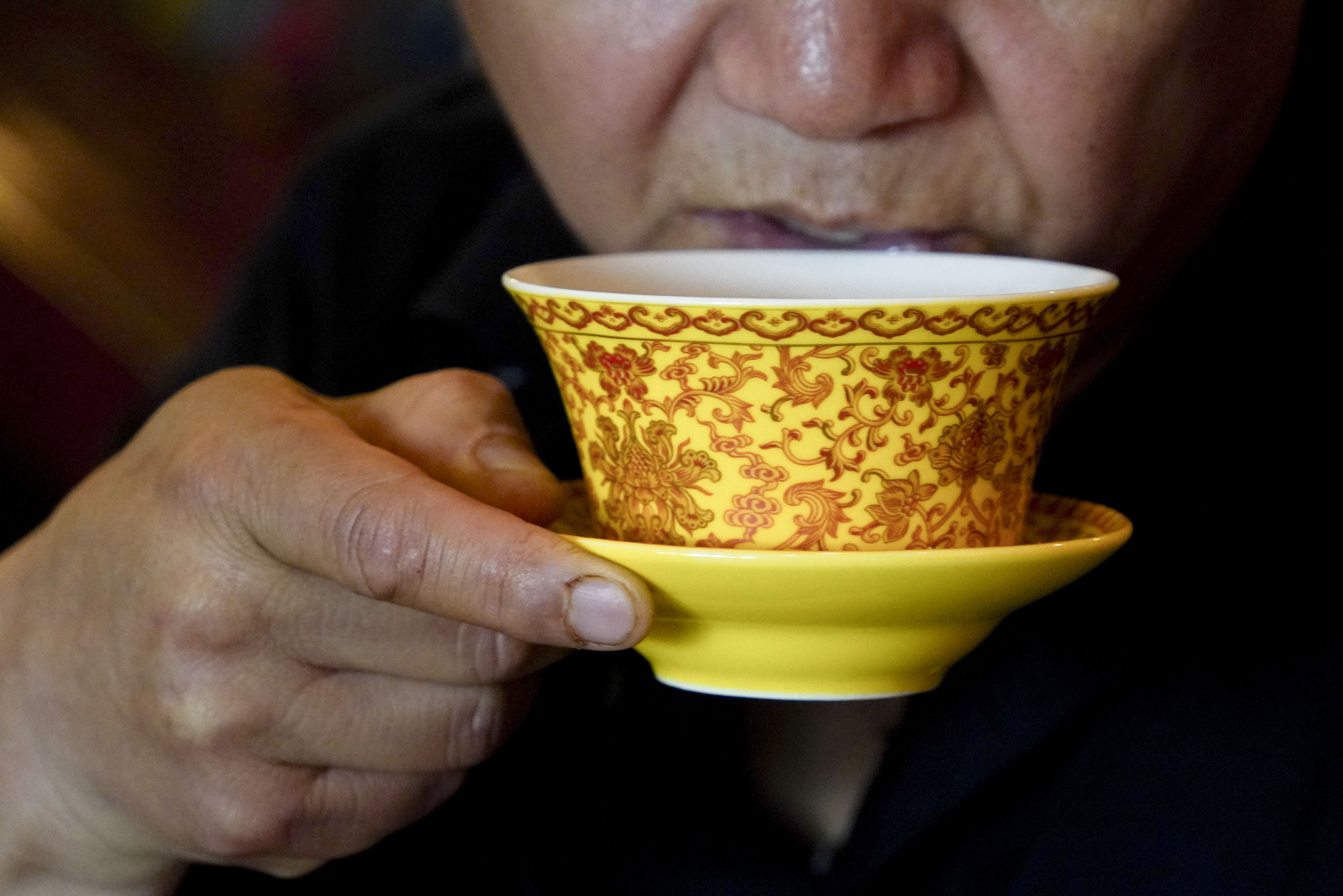
Valunbisitsang says Tibetan butter tea is always served to welcome guests. But rarely is it prepared especially for them. According to Valunbisitsang, most Tibetan homes have ready-made tea all day long.
“From the morning we make four to five thermos[es],” he said. “Every day we would be [drinking] non-stop. It’s already there in any [Tibetan] home.”
Valunbisitsang says that when he sees his regular customers entering the restaurant, he greets them with Tibetan butter tea, always on the house. For him, it is a way to give them a taste of Tibetan hospitality.
“[In Tibet] for food and everything, I serve you first,” he said. “We give the food first to the guest.”
Making butter tea at home
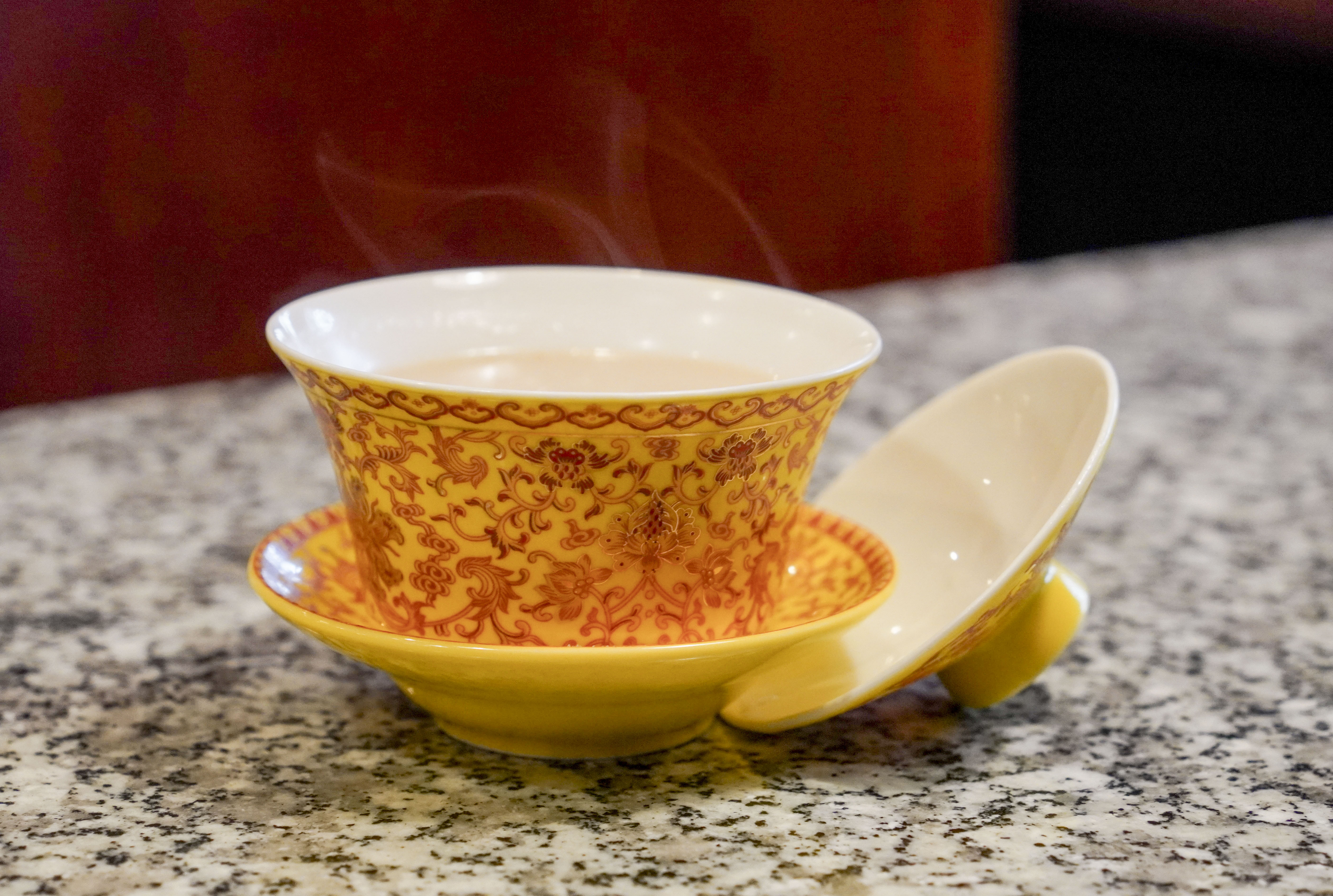
While replicating the taste of authentic butter tea brewed in Tibet is a difficult feat, it is easy to make a homemade version that comes close.
Butter Tea Recipe (adapted from The Times of India)
Ingredients (2 servings):
- 2 black tea bags
- ¼ tsp salt (or to taste)
- 2 tbsp unsalted cow’s butter (unless yak butter is available)
- For additional creaminess, add whole milk or cream to taste.
Instructions:
- Steep the tea in two cups of boiled water, until a rich, dark brown color is obtained (5-10 minutes).
- Remove the teabags and add the salt and optional milk/cream.
- Stir and bring to a boil.
- Transfer mixture to a blender and add the butter. Blend until homogenous and slightly frothy (about two minutes).
- Serve hot in cups or bowls. According to Valunbisitsang, sweet rice is one of the best accompaniments to this traditional drink.
Share with family and/or guests, and enjoy!
READ ALSO:



